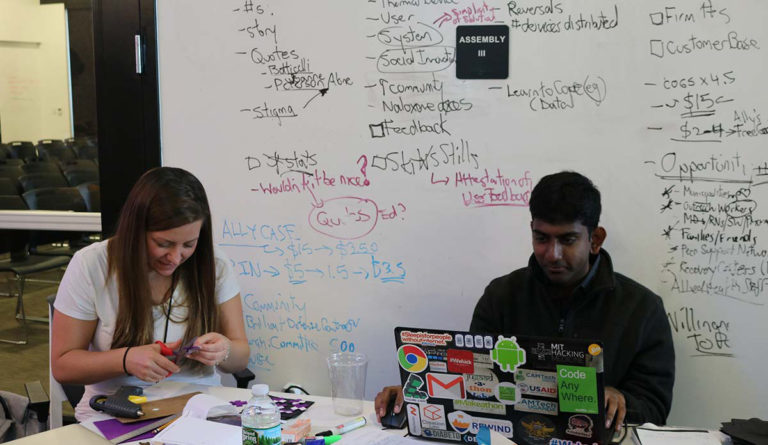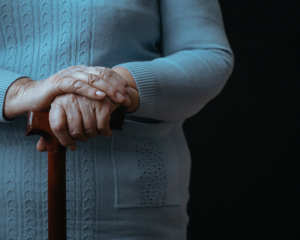Hacking Public Health
Everyone loves a hackathon, it seems. How much do hackathons really contribute to solving public health problems? Are they a meaningful new tool, or simply the latest fad?

Read Time: 4 minutes
Published:
Everyone loves a hackathon, it seems. Yet, do hackathons really contribute to solving public health problems? Are they a meaningful new tool—or simply the latest fad?
The theory is that hackathons—multi-day, energy-charged events often described as “brainstorming on steroids”—spark exciting new thinking by fostering cognitive diversity, teamwork, and an atmosphere that is competitive yet “safe-to-fail.” A typical hackathon brings people with diverse backgrounds together in a new environment to address a particular problem or challenge. Participants break into teams to design innovative new solutions. They pitch their ideas, rapidly discard or refine them, and often compete for prize money or access to ongoing expert guidance at the end of an action-packed few days. Hackathons can be a fun way to spend a weekend, and they raise the visibility of tricky or overlooked problems. They also hold out the promise of producing the next big breakthrough idea.
The Opioid Epidemic Challenge Summit and Hackathon, hosted in Boston in September 2016, featured the key elements that define hackathons. Initiated by the GE Foundation with the nonprofit, CAMTech, the three-day event convened approximately 265 participants to take on Massachusetts’ opioid crisis. The first day was dedicated to expert presentations that laid out the state’s opioid challenge from prevention to treatment to recovery. From there, hackathon participants—a group that included clinicians, community members, and others—threw out two-minute pitches of problems and proposed solutions.
Seventy ideas were pitched, recalled GE Foundation director, Jennifer Edwards. Of those, teams formed to develop seventeen ideas—including ideas for overcoming stigma, managing medications, and creating community among individuals in recovery—into full-fledged projects.
…numerous ideas had made significant progress by twelve months post-event on measures such as funds raised, pilot projects initiated, patents filed, and new companies formed.
Early research on public health hackathons has primarily focused on whether they yield actual products. A 2017 article by Olson et al., for example, examined hackathons aimed at seeding new global health tools. The authors found that numerous ideas had made significant progress by twelve months post-event on measures such as funds raised, pilot projects initiated, patents filed, and new companies formed. Importantly, the study also documented broader hackathon impacts on health innovation activities in local communities. For example, over 30% of teams reported that at least one team member went on to work with people they met at the hackathon on other health innovation initiatives.
In Boston, two ideas from the 2016 hackathon gained traction. The first, a product called GEMS Boxes—public boxes stocked with naloxone that can be unlocked by 911 dispatch—ran a successful feasibility trial in May 2017. Its founders are now in discussions with potential buyers. The second, a mobile health van called CareZONE, is being piloted in Boston neighborhoods with frequent fatal overdoses.
More broadly, the Boston hackathon inspired the Empire State Opioid Innovation Challenge, which CAMTech and partners hosted in New York State last month. And, according to Edwards, the 2016 event also catalyzed private-sector investment in the addressing the opiod crisis in Massachusetts.
In March 2017, groups like Partners HealthCare, Blue Cross Blue Shield, and SEIU1199, along with GE Foundation and others, launched RIZE Massachusetts, an innovation fund aimed at ending the state’s opioid epidemic. The high profile organization, which awarded its first “design grants” to community-based providers in June 2018, intends to fuel promising new solutions to opioid addiction. Its grant making, expected to land in the multiple millions, will ensure that local energy remains focused on one of the toughest public health challenges of recent times.

Feature image: Participants co-creating solutions to curb the local and national opioid epidemic at the 2016 Opioid Epidemic Challenge Summit and Hackathon, hosted by CAMTech in partnership with the GE Foundation in Boston in September 2016. Photo courtesy of CAMTech.
Image in article: Mockup of indoor and outdoor models of GEMS Boxes, $10K grand prize winner of the 2016 Opioid Epidemic Challenge Summit and Hackathon, hosted by CAMTech in partnership with the GE Foundation in Boston in September 2016. A GEMs Box is a solar-powered, remotely-unlockable supply kiosk that communicates with 911, and is stocked with critical first-aid supplies that can be administered with no medical training, such as Naloxone (an opioid antidote), tourniquets/gauze, epi-pens, and AEDs. Photo courtesy of CAMTech.


